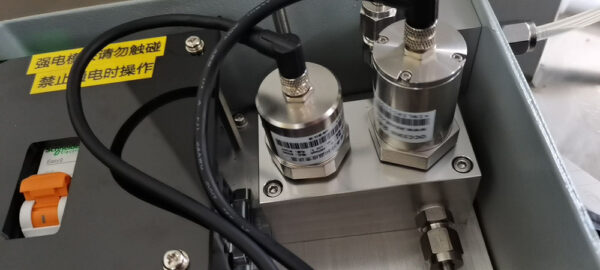Selecting the right sensor for testing moisture in oil is crucial to ensure accurate and reliable measurements. Several factors should be considered when choosing a moisture-in-oil sensor:
- Oil Type: Determine the type of oil you need to test. Different oils, such as mineral oil, synthetic oil, or vegetable oil, may require specific sensors designed to work effectively with that oil type. Compatibility is essential to achieve accurate results.
- Measurement Range: Assess the range of moisture levels you need to measure. Sensors come with different measurement ranges, and it’s essential to select one that covers the expected moisture levels in your application. Ensure that the sensor can detect both trace amounts and higher concentrations of moisture, as per your requirements.
- Accuracy and Precision: Consider the accuracy and precision required for your application. High-precision sensors are crucial when precise moisture measurements are essential, such as in laboratories or critical industrial processes.
- Response Time: Different sensors have varying response times. If you need real-time or rapid moisture measurements, select a sensor with a fast response time. However, for some applications, a slightly longer response time may be acceptable.
- Calibration and Maintenance: Determine the calibration and maintenance requirements of the sensor. Some sensors may need regular calibration to maintain accuracy. Consider the availability of calibration equipment and services.
- Sensor Technology: There are various sensor technologies available for moisture measurement in oil, including capacitance, resistive, optical, and microwave-based sensors. Each technology has its advantages and limitations. Select the one that best suits your application in terms of accuracy, reliability, and environmental conditions.
- Environmental Conditions: Assess the environmental conditions where the sensor will be used. Factors like temperature, pressure, and potential exposure to chemicals or contaminants can impact sensor performance. Ensure the selected sensor can operate effectively in the given conditions.
- Installation and Integration: Consider how the sensor will be installed and integrated into your system. Some sensors are designed for in-line or on-line measurements, while others are more suitable for laboratory testing. Ensure the sensor can be easily integrated into your setup.
- Output and Data Handling: Evaluate the sensor’s output options. Some sensors provide analog or digital outputs, while others offer communication protocols for data logging and remote monitoring. Choose the sensor that fits your data handling and analysis requirements.
- Certifications and Compliance: Check if the sensor complies with industry standards or regulations relevant to your application. Compliance may be necessary for quality control, safety, and regulatory purposes.
- Cost and Budget: Determine your budget for the sensor. Different sensors come at varying price points, so select one that provides the necessary features and performance within your budget constraints.
- Warranty and Support: Ensure that the sensor manufacturer or supplier offers adequate support, documentation, and warranties to address any issues that may arise during sensor operation.
It’s essential to thoroughly research and compare different moisture-in-oil sensors, read product specifications, and seek recommendations from experts in your field to make an informed selection. The Kongter KT-200 Moisture in Sensor is robust, rugged and very easy-going for operation. It is critical for accurate moisture measurements and the overall effectiveness of your moisture analysis system.

